Uber does not always win
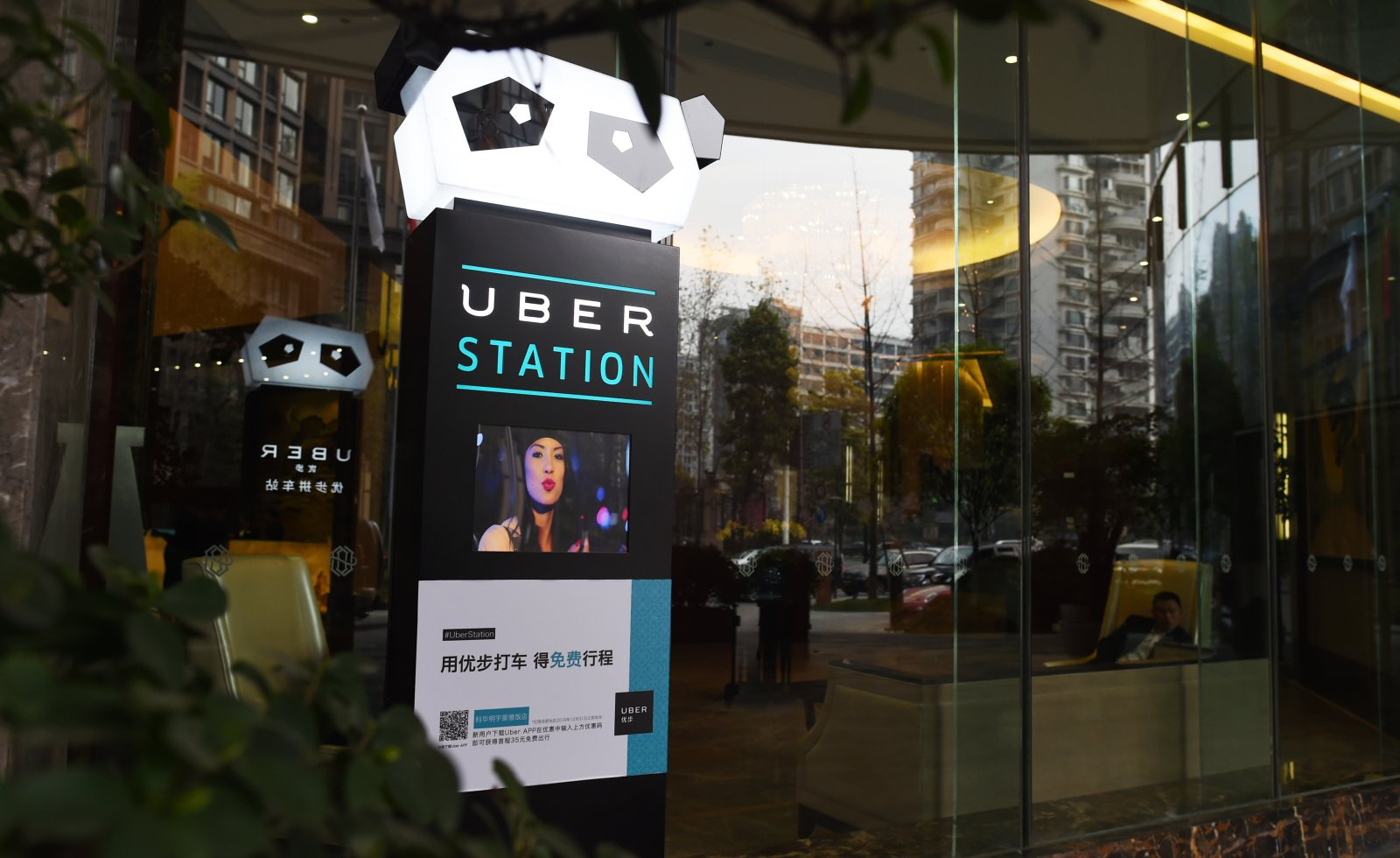
Greg Baker / AFP / Getty Images
Taxi service Uber causes controversial reviews. Moreover, such reviews come from both users and competitors. The business model of this service is very popular at the moment, and the creation of a similar project, it would seem, does not require a lot of costs. Nevertheless, the Uber team continues to work on the technological aspects of the service to this day.
The hardest part starts when the service enters the market. Such large companies as Uber can "crush" most of their competitors and even oust them from their home market. However, competitors still appear and sometimes achieve unexpected results. And in such a situation, when everything is not going according to the scenario, Uber has to do a “knight's move”.
')
Let's go to the world
Taxi service Uber plans to merge its Chinese division and Didi Chuxing taxi service, which also operates in China. The owners of Uber China, including the Chinese corporation Baidu Inc., will get 20% of the combined company.
It is assumed that after the merger, Uber will cease operations in China, but will receive a significant stake in the new company.
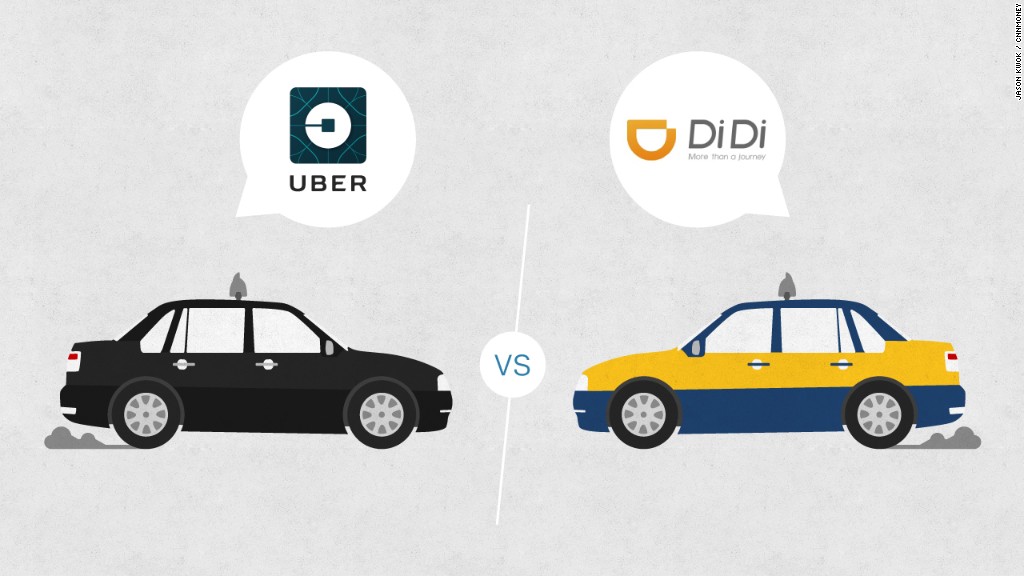
Prior to this, Didi was Uber's main competitor in China.
The American company will receive 5.89% in the capital Didi, which means 17.7% of economic interest.
Didi will get the brand Uber, business and customer base of the company. Representatives of Didi also noted that they plan to combine management and technological experience of the two teams, as well as their expertise. The current shareholders of Uber China will receive 2.3% of the economic interest in the combined company. Uber China itself will continue to work under its brand in China. And the head of Uber, Travis Kalanik, will become a member of the board of directors of the new company.
In addition to the transfer of Didi Chuxing to the Chinese business of Uber, there is one more condition for the deal: the Chinese company invests $ 1 billion in Uber. The cost of the combined company will be $ 35 billion, Bloomberg sources say.
At first, the public perceived information about the merger as another rumor, but today, on August 1, both companies confirmed their intentions.
“Uber and Didi Chuxing are investing billions of dollars in China, and both companies have yet to make a profit there. Profitability is the only way to build a sustainable business that can meet the needs of passengers, drivers and cities in the long run, ”commented Travis Kalanick, CEO of Uber.
The agreement with Uber will help the industry to enter a more sustainable development path, said Didi Chuxing founder Cheng Wei.
The contract comes into force on November 1. According to the contract from now on, both companies are prohibited from providing services below the set price.
Didi Chuxing is the largest taxi service in China. Meanwhile, according to Bloomberg experts, the alliance of companies may complicate Didi Chuxing’s relations with other market players. Earlier, the Chinese service agreed on cooperation with American Lyft Inc., Indian Ola, as well as Grab, operating in Southeast Asia, in order to unite efforts to win the competitive struggle of Uber.
Experts also do not exclude that the deal is being prepared on the eve of the first public offering of Uber securities.
For the company Didi Chuxing, such a deal is not the first - a year ago, it already merged with the similar Chinese service Kuaidi. Investors of the service are the founders of the Chinese Internet giants Alibaba and Tencent, as well as Apple.
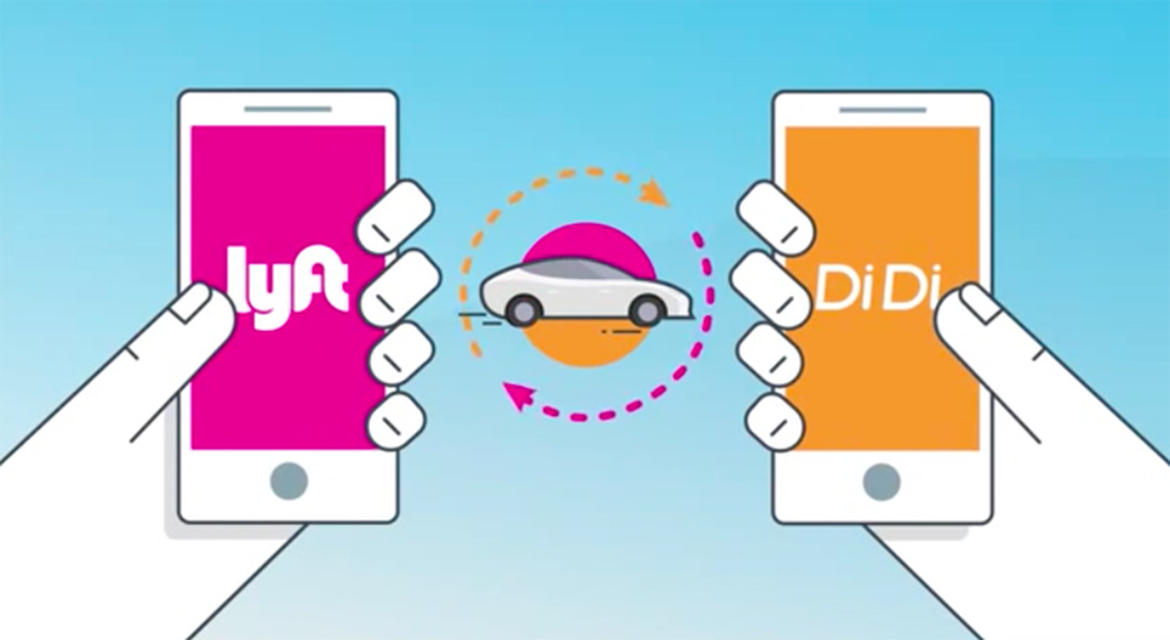
In 2015, at the presentation for investors, Didi’s representatives stated that by 2020, the annual volume of the Chinese market for taxi call services would be $ 50 billion.
In 2016, Didi Chuxing received a $ 1 billion investment from Apple. In total, the Chinese company raised $ 7.23 billion. Now, according to the company, Didi Chuxing users are about 300 million people who make 14 million trips per day.
The 33-year-old company founder, Chen Wei, is on the global list of the richest Forbes businessmen with a fortune of $ 1 billion.
It is noteworthy that the news of the transaction was preceded by another news - a few days ago, the Chinese government legalized services to call drivers.
In mid-June, Kalanik declared that China had become the largest market for Uber. Its volume exceeded even the American market. However, access to China cost the company dearly: Bloomberg sources believe that at the launch in China, Uber lost $ 2 billion. In the Chinese market, the company showed great generosity, providing great discounts for passengers and bonuses to drivers.
Uber not one
Grab Taxi CEO Anthony Tenn commented on the situation:
“Companies have been actively competing for over a year. Our investor and global partner Didi became the winner in this struggle for leadership in the Chinese market. ”
He believes that in other countries, local players can compete successfully with Uber:
“We live in a diverse world, and there are no universal recipes. Local solutions better deal with local problems. Just as didi did in China, and in Singapore or Jakarta, or in Manila, users have their own pain points ... "

Singapore-based GrabTaxi Holdings is already operating in 30 cities in six countries of Southeast Asia - this is 2 times more than the number of cities in the region where Uber is present - and, according to analyst firm App Annie, it bypasses Uber by the number of users of its mobile application in this region .
Singapore-based GrabTaxi has existed since 2012 and offers services focused on the specifics of the local market: Grab users can call a mototaxi that is very popular in Asian-loaded cities, order delivery of small cargoes and pay for services in cash.
Nevertheless, the struggle in the regions continues. One of the important markets is Africa. In Kenya, startups are trying to compete with Uber, as well as such giants as Safaricom, the country's largest telecom and fintech company. Last launched ridesharingovy service Little Cab .
The service is available to users of devices based on iOS, Android and Windows. In the near future, they will be able to use and those who do not have smartphones. The application allows you to pay in cash, with a card and, of course, with Safaricom M-Pesa mobile money. The service also supports maps with GPS and provides passengers with free Wi-Fi.
Uber launched in Kenya in 2015.
Other services in this region include MondoRide , Taxify , Dandia and Maramoja .
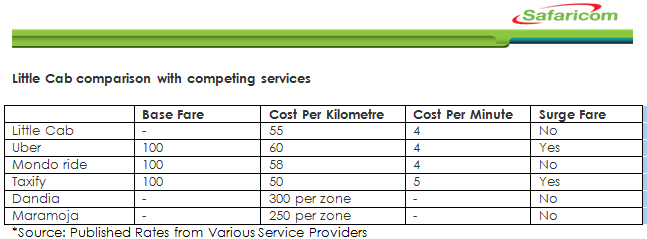
“Little Cab intends to reach 1 million trips over the next 6 months,” said Craft Silicon CEO Kamal Budhabhati, who is a Safaricom partner.
Technical points
DBMS change
July 26, Uber announced the change of the database. The “early” data-layer architecture was a monolithic backend application written in Python, which was used by Postgres. Since then, the architecture has changed: over time, the developers switched to the microservice model.
And instead of Postgres, in many cases, the Schemaless layer was used - an add-on over MySQL. Another reason for the complete abandonment of Postgres is the presence of problems when performing various operations and, as a consequence, the threat of losing valuable information.
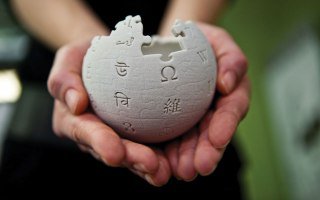
Development of own map service
As reported by the Financial Times, Uber plans to develop its own map service. The company's goal is to get rid of dependence on Google Maps. The company is ready to allocate $ 500 million for this project.
Uber is currently collecting information and images for maps in the United States and Mexico. We are talking about traffic patterns, the location of entrances to the building and other details. For this, the company uses machines with mapping equipment. In other countries, data collection will begin shortly.
In 2015, Uber hired Brian McClendon, a specialist in digital mapping, who managed Google Maps and was responsible for creating Google Earth. According to him, Google Maps was a good starting point for Uber, but now these maps do not provide the necessary level of detail for the terrain.
“We’ve increased our investment in cartography because of the need for maps designed with Uber’s experience in mind,” McClendon said. He added that in developing countries, Google Maps is not sufficiently accurate, which is why Uber drivers have to clarify the route among passengers.
Despite the fact that Google has previously invested in Uber, both companies are trying to avoid close cooperation, because they are developing parallel technologies in parallel, such as unmanned vehicles, the Financial Times notes.
In June 2015, Uber acquired a share in the Bing Maps map service from Microsoft. As part of the deal, the taxi service received about 100 employees who were engaged in the collection and processing of images in Bing Maps. In March 2015, Uber purchased the deCarta map service.
*******
The consolidation trend of ridesharing services could not be avoided even by Uber. But earlier these services, for the most part, united against it. And now the situation has changed.
As it turned out, Uber has a lot of problems not only in terms of business, but also in technology. Uber does not always win. But the company continues to develop comprehensively and still remains the most expensive startup in the world.
Source: https://habr.com/ru/post/306874/
All Articles